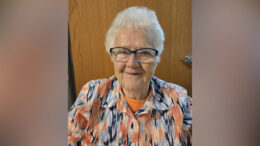By Jim Meyer – Staff writer
A research project is underway in Venango County with a goal toward improving rehabilitation services for juvenile offenders.
Venango County commissioners at their meeting last week approved a memorandum of understanding between Venango County Juvenile Probation and Policy Research Associates, which outlines responsibilities for a juvenile offender trauma assessment study.
“The memorandum spells out their obligations and ours,” said Robert Daugherty,Venango County’s chief probation officer.
Julie Bullard, supervisor of the juvenile division, said there is no such thing as having too much information.
“It informs the supervision plan,” she said. “If someone has been abused then things like yelling or putting hands on them might be counterproductive.
The study involves collecting data over a three year period and then analyzed for developing a plan of response.
“This used be done based on intuition, but now we’re seeking a more scientific approach,” Daugherty said.
As for any opposition to the study, Daugherty said he has faced absolutely none.
“Everybody’s extremely supportive and understand the need for better results and better lives for these kids,” he said.
Bullard said the current trauma assessment is provided by UCLA and breaks down trauma into 23 different areas. Trauma can be anything scary or violent that has happened directly to the child or that the child has been exposed to in some way.
“We try to figure out which is most affecting them right now,” she said. “Were they the victim of it? Was it something they witnessed? Was it something they just learned about?”
Also explored is the manner in which the child is behaving, such as lashing out, committing more crimes or taking drugs.
A co-principal investigator in this project is Dr. Keith Cruise, a clinical psychologist and faculty member at Fordham University. Cruise has been working the fields of mental health and juvenile justice for 18 years and specializing in trauma for the past seven years.
“My goal is to improve youth functioning overall,” Cruise said. “We want to provide the right treatment services and help these kids not to get involved with the courts in the future.”
Trauma, he said, is an umbrella term to describe an event, experienced directly or indirectly, that could cause serious bodily injury or death.
While the juvenile justice system seeks to balance public safety with rehabilitation, Cruise said that recently the focus has been public safety through rehabilitation.
“If we can address rehabilitation needs and provide the appropriate services, then we automatically enhance public safety,” he said.
Cruise took an interest in improving juvenile justice while working in the area of child abuse and neglect, seeing first hand the affects of trauma.
“There has been so much rapid change in the last few years,” he said. “We have a much greater understanding of mental health, and the youths respond better to an individualized plan.”
The trauma screening index in use breaks down trauma into 23 areas.
“You can think of it as a big house with a lot of rooms,” Cruise said.
These areas include accidental injuries, abuse, bullying, terrorism and war.
An evaluation to determine if the methods have been effective will follow the three-year study.



































